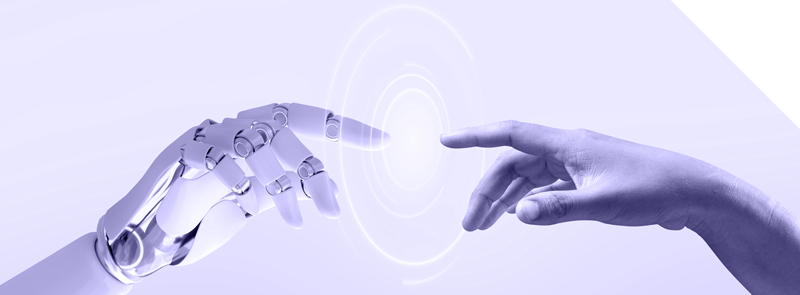How to Interview for Soft Skills (Guide)

The world of work has been evolving for some time, influenced by technologies and societal shifts. As a result, enterprises are reassessing their HR models, and many leaders realize that a view of the workforce as a rigid structure of job descriptions and defined career paths is going the way of the dodo. Over the past decade, artificial intelligence (AI) has slowly moved into all organizational functions. Leaders have been watching the advance of this and other technologies as they try to figure out how to adapt to an ever-changing marketplace.
GATE
Thinking Outside the Job
Current Ways of Working

Our perception of work is changing almost daily. The ways in which employees and independent professionals achieve success are evolving as well. A recent Deloitte survey reported that many organizations are increasingly placing “skills” instead of “jobs” at the core of how work gets done today. The survey found that 63% of current work falls outside people’s core job descriptions, 81% is performed across functional boundaries, and 36% is performed by workers outside an organization.
While job or role descriptions still serve as a foundation for candidate searches, enterprises are increasingly focused on skills as the cornerstone for talent management. Skills-based organizations, in fact, are future proofing the business. The skills-based organization is positioned for future success in the business and in its talent pool.
Focusing on Soft Skills

AI and other technologies are transforming the world of work, and today’s workforce will need to continuously learn new skills as different occupations and ways of working emerge. Experts cannot yet clearly define which specific roles will be lost and which new roles will materialize in the future workplace. However, many of the skills that will be needed can be defined.
Certain skills are uniquely human and cannot be replaced by automation (at least for now). When combined with work-specific skills, other skills—traditionally known as soft skills, and now often referred to as human skills—will help your talent navigate the evolving landscape, establish a solid foundation for professional growth, and enrich their lives beyond the workplace. Critical thinking, creativity, and communication are just a few examples of the soft skills the AI has yet to master.
Hiring for soft skills will help future-proof your enterprise. These human skills are essential, regardless of the type of work or organizational function.
Assessing Soft Skills at 30,000 Feet
Whether you are hiring an employee or engaging an independent professional, here are some ways to screen for soft skills:

In the Interview
Whether interviewing in person or online, watch out for nonverbal cues. Were they on time for the interview? Do they generally maintain eye contact with you? Are they asking questions based on your conversation? Even their ability to deal with technological glitches during a virtual interview can give you some insight into how they will operate in your organization.
Talking to references
Request references from former colleagues as well as former managers. Managers can provide insight into areas like problem-solving, conflict resolution, and coachability. Former colleagues may be able to give you a clear picture of the candidate’s collaboration style, and how they handled stress, uncertainty, or unexpected challenges on the job.
Browsing social media
Work-focused social platforms like LinkedIn can give you further insight about a candidate. Go past the experience list in the profile and look at posts and comments along with any articles they have published.
Taking a Deeper Dive
The list of soft skills that are valuable in the workplace is long. These four soft skills are a good starting point for hiring and engaging talent with the future of work in mind:

- Critical thinking
- Creativity
- Communication
- Entrepreneurship
1. Critical Thinking
Critical thinking is the ability to analyze available facts, evidence, observations, and arguments to form a judgment free of bias or assumptions. This skill is especially important in situations like:
- Anticipating problems and proactively preventing them
- Designing solutions for challenges
- Creating streamlined, efficient work processes
- Gauging demand for a product or service based on industry data and trends
- Delegating tasks effectively
Critical thinking is the friend of data, metrics, and analysis. People who apply this skill make well-reasoned arguments based on fact, without any emotion involved, using:
- Logic – Critical thinkers can consider a situation from every angle and use logic to develop a solution to a problem.
- Discipline – They can also discern their own biases and assumptions and set them aside for the sake of developing a more objective perspective.
- Innovation – They look at problems from a different viewpoint, which helps them come up with fresh solutions.
8 Characteristics of Critical Thinking
In the workplace, critical thinkers can be spotted through a range of characteristics. For example, they:
- Ask questions and look for the best available information.
- Are more interested in getting something right than in being the one who is right.
- Take time to better understand a situation before acting or making a decision.
- Ask questions to understand reasons behind the data being presented.
- Look for patterns in the data and avoid forcing information to fit a desired conclusion.
- Are continuous learners and curious about a variety of topics.
- Are willing to consider alternative ideas and opinions.
- Can clearly explain how they arrived at a conclusion.
Notice the ways in which the employees and independent talent on your team interact, approach problems and challenges, and present solutions. Are there critical thinkers among them? If so, find ways to cultivate and nurture them.
Hiring Critical Thinkers
Incorporate questions about critical thinking into your interviews of potential employees and contractors. These questions can help you gauge how a candidate uses (or doesn’t use) critical thinking.
How do you make a decision when you can’t access all the information?
Assess how the person thinks within limitations. Look for their use of logic and ingenuity to reach a final decision. Ask for an example from their experience.
What was a difficult work-related decision you had to make?
Understand the thought process behind the decision and how the person applied critical thinking to figure out all the options and choose the best solution.
Talk about a time when you had to make a decision immediately.
Gauge the person’s approach in a time- and information-bound situation. Note how they applied logic and reasoning under pressure.
How would you engage with a colleague who presented a solution that is different from yours?
Listen for the person’s ability to be open-minded and how they consider new ideas offered by other team members.
Talk about a big goal you set for yourself and how you achieved it.
Pay close attention to both the actual process they went through and how they explain it to you.
2. Creativity
Creativity sparks innovative solutions that meet customers’ needs, streamline operations, and boost productivity. When you hire for creativity in your optimized workforce, your organization can see major results.
Creativity in an enterprise is foundational, permeating every department and workflow. Research has shown greater financial performance—as much as two-thirds higher than average—in firms that encourage creativity in the workforce (the majority of the world’s most innovative organizations are also the most valuable). Beyond driving innovation, creativity in your workforce—whether employee or independent—generates a lot of other business benefits.
An organizational culture that fosters creativity encourages collaboration and teamwork. Workers can collaborate to brainstorm new ideas and think critically to solve complex challenges. Giving them the freedom to apply creativity on the job can improve productivity and enhance well-being and motivation. In turn, the company can improve workflows in operations, achieve new revenue streams, and strengthen its competitive position in the market.
7 Characteristics of a Creative Worker
Creativity in the workplace is evident in how people approach their tasks and interact with each other. Creative workers:
- Collaborate effectively with colleagues
- Ask questions to help them understand others’ ideas
- Share their ideas for improving processes or operations
- Are willing to take risks to test and refine ideas
- Question “the way we do things here”
- Are comfortable with ambiguity
- Learn from constructive feedback
Many high-value independent professionals have developed these characteristics during the projects they work on and the teams they collaborated with. Engaging independent talent who demonstrate creativity can pay dividends through increased motivation, productivity, and output in the areas where they work.
Hiring for Creativity
Including interview questions about creativity can help you gauge this soft skill in your potential independent contractors. Here are a few questions to consider asking.
How do you handle situations where colleagues don’t understand your creative ideas?
This question can help shed light on how the candidate helps others grasp creative ideas and how they are able to refine or explain these ideas even further.
How have you inspired a client or team member to be more creative?
This answer can give you insight into how the candidate interacts with others and their ability to foster creativity among colleagues and clients.
Tell me about a time that you used creativity to solve a problem.
In addition to listening to their story, note the story they choose. For example, they might share details of a project they took on, which can illustrate their willingness to take risks in client engagements when there is a chance of a good outcome. Or they may describe a challenge in their own business, which can show how they use creativity to drive growth.
Tell me about a time that you achieved buy-in from a client or team for an out-of-the-box idea.
This raises the stakes a bit in terms of turning an idea into reality. Gaining buy-in often requires the allocation of resources and a commitment from management to the initiative. Make note of how the candidate was able to move the needle in favor of the idea and what the ultimate outcome was.
Do you have a process to include creativity in a problem-solving session? If so, explain.
There are many exercises that help foster creativity in a group setting. See what exercises the client has used and how well they worked to solve problems.
What has been the biggest success resulting from your creative approach?
This question will likely be answered with great enthusiasm and detail. If possible, get quantitative results like sales increases, cost savings, or time savings.
3. Communication
While communication skills have always been important in the workplace, the advent of AI makes them even more significant. Some forms of communication can be taught to AI tools, but others are uniquely human.
The quality of communication on your team can significantly affect productivity and project outcomes. Ensure that the independent talent you bring on board are accomplished communicators.
The four main types of communication are:
- Written, which includes formal (e.g., reports, white papers) and informal (e.g., chat messages, social media)
- Verbal, including conversations with and among team members or presentations/public speaking, in person and virtually
- Non-verbal, including behavioral and body cues, in personal and virtually
- Visual, such as graphics and other visual media used to convey a message
AI can be trained to use some kinds of written communication. However, AI cannot yet create communications that lie outside the parameters built into it. And though it can analyze information and be taught how to respond in certain scenarios, it’s unable to synthesize new responses that may be needed in some cases. When it comes to verbal, non-verbal, and visual communication, AI isn’t yet a significant player in those areas.
In the evolving workplace where AI will be increasingly present, it’s essential to hire independent talent with well-developed communication skills across all types.
7 Characteristics of Effective Communicators
In the workplace, these seven characteristics play a key role in boosting productivity and improving project outcomes.
- Stays on message: In written and verbal communications, the writer or speaker stays focused on the topic being addressed. They are clear, succinct, and to the point.
- Matches the medium to the message: The best medium depends on the message you’re trying to convey. For example, verbal communication is ideal for messaging that requires immediate two-way interaction. Meanwhile, quick questions or information sharing among team members might be better suited for chat spaces like Slack. A competent communicator uses the best medium for the message.
- Accepts and provides useful feedback: Accepting and providing feedback is an essential workplace skill. Strong communicators can accept constructive feedback and give constructive input to others. They ask thoughtful questions, provide relevant answers, and offer specific examples that enhance the feedback.
- Shows empathy: This communication skill is important in both group and one-on-one interactions. Effectively reading and understanding a person’s reactions and emotions (often expressed nonverbally) allow responses that acknowledge and validate their position. This can help the interaction continue to move in a productive direction.
- Responds quickly: Whether returning a phone call or replying to an email, a quick response is valuable. Skilled communicators respond to messages in a timely manner. Even when a full response takes time, they acknowledge receipt of the message and let the sender know when they can expect the longer answer.
- Actively listens: Active listening requires close engagement with the person you’re communicating with. Those who have this skill pay close attention to what is being said and how it is being delivered. They repeat or rephrase along the way to get confirmation that they accurately understand the message and ask questions as needed to gain clarity.
- Applies critical thinking: Extending active listening across all communication types, a skilled communicator will analyze facts and observations. If needed they will engage further with the message originator to ensure accuracy and relevance based on their analysis.
Hiring for Communication
Here are some interview questions that can help demonstrate communication skills in your potential independent contractors.
How do you prefer to communicate at work?
There are two points to note. First, do their preferences work for the role they will fill? Second, do they talk about having preferences that vary according to the communication?
You’ve made a mistake that affects another team member. How would you let them know?
In most situations, this kind of communication requires live verbal communication, preferably in person or virtually. Ask for real-life examples where they’ve either been the recipient or originator. Pay attention to how things were resolved.
How would you work with a team member who is uncomfortable with verbal communication?
Find out what options the candidate would pursue to accommodate the team member or encourage them to express themselves verbally.
Tell me about a work situation where non-verbal communication played a key role in outcomes.
The response to this request can help you assess how attuned the candidate is to nonverbal cues and whether they can adjust their message to achieve a desired outcome.
How would you explain a complex issue to a new team member?
The response to this question can provide a great deal of insight into the candidate’s skills. How do they use different types of communication in their explanation? Will they encourage questions from other team members? How will they ensure that the explanation is understood?
4. Entrepreneurship
As digital and AI technologies continue to transform the world of work, the future workforce will need to be adaptable, agile, and comfortable with continuous change. These qualities, along with the soft skills we’ve discussed, can be summed up in one word: entrepreneurship.
Independent professionals tend to be entrepreneurial by nature, which can be a huge advantage for your organization. When your workforce is optimized through a strategic mix of employees and independent contractors, you can tap into the innate entrepreneurial perspectives of your direct sourcing talent network. This can help effect changes in culture to align with the technology-driven future of work.
5 Characteristics of Entrepreneurial Workers
Combining critical thinking, creativity, and excellent communication skills, entrepreneurial workers exhibit these characteristics:
- They are high-energy individuals: These are noticeable people because of the energy they exude. They work hard and with passion.
- They love creative challenges: Entrepreneurial workers thrive when presented with a challenge. The more creative the challenge, the better.
- They proactively offer new ideas: Whether they come up with a process improvement, a tweak to a product design, or a way to expand the business, entrepreneurial workers don’t wait to be asked.
- They are action-oriented: While they are certainly thinkers, entrepreneurial workers can process information mentally faster. Once they’ve done that processing, they want to get to work rather than continuing the discussion.
- They seek personal and professional improvement: Entrepreneurial people are on a never-ending quest for improvement in all aspects of their lives, both internal and external.
Hiring Entrepreneurial Talent
These questions can help you gauge the level of entrepreneurship in the independent talent you’re considering. When possible, ask follow-up questions to get more detail and insight.
What roles have you had in your clients’ teams?
Listen for details that go beyond the tasks related to the role. Have they supported other team members in their efforts to address new challenges? Were they able to offer ideas that improved project outcomes? How did they contribute beyond their scope of work to benefit everyone?
Tell me about a business problem you solved when you were strapped for time or resources.
Entrepreneurial workers take responsible action. How did they tackle the problem? Pay attention to how they used their imagination, sought out assistance, or came up with nontraditional solutions to overcome challenges.
Have you disagreed with a client or team lead on one of your projects? Tell me how you resolved the disagreement.
Dealing effectively with disagreement is a valuable skill in entrepreneurial workers. Assess their level of comfort with conflict and their experience with handling such situations calmly and professionally while achieving a satisfactory outcome.
Tell me about a mistake you made in one of your projects, what you learned from it, and how you corrected it.
Smart entrepreneurs know that things sometimes go upside down. Rather than be blamed and upset, they learn from the situation and make the necessary corrections.
In this guide
Subscribe to the Insights blog to get weekly insights on the next way of working
Related posts
Learn more about MBO
Learn how to start, run and grow your business with expert insights from MBO Partners
Learn how to find, manage and retain top independent contractors for your projects.
MBO Partners publishes influential reports, cited by government and other major media outlets.
Research and tools designed to uncover insights and develop groundbreaking solutions.


